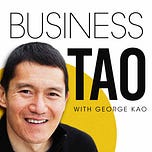Jeremy Blanchard's passion is supporting coaches to fall in love with client enrollment. He’s been training life & leadership coaches for 7 years in the art of enrollment. He’s also a course leader, mentor coach, and the Director of Enrollment at a professional coach training school: The Academy for Coaching Excellence. After attending his trainings, Jeremy’s students are actually looking forward to having sales & enrollment conversations, because they see what a difference that conversation can make in the life of a prospective client, whether or not they sign up.
Jeremy is on staff for the Academy for Coaching Excellence: https://acecoachtraining.com
Video: https://youtu.be/ckXucCEOBIY
In this interview we discuss:
Principle: “tell the truth” - The key distinguishing factor I’ve noticed between the enrollment conversations that feel “sales-y” and the ones that feel true to who you are is whether or not you’re telling the truth. Here, I don’t mean “truth vs directly lying” per se. I mean “truth vs hidden intention.” It often looks like
Ways to implement that:
Clarify the purpose - What is the purpose of this conversation? State it up front. Applies in a referral call or in an enrollment call with a prospect. Could sound like... [insert example].
If the purpose of a referral call is to have them refer people to your coaching practice, don’t say that it’s a “friend catch up call.”
If the purpose of an enrollment call is to see if you’re a good fit to work together, don’t say that it’s for them to discover “key steps to move their business forward” or call it a “coaching call.”
Permission - Ask permission before going on to each next part of the conversation.
Two examples: Which is more empowering and opens up more possibility?
“Okay, it sounds like you’re having challenges with X and want Y. Let me tell you how my coaching can help with that…”
“Okay, it sounds like you’re having challenges with X and really wanting Y. Would it be useful to talk for a bit about how my services might be able to support with that?”
Ways to apply permission:
After stating the purpose: “How does that sound?” (checking that you’re on the same page_)
Before sharing what: “I think I have a good understanding of what you’re looking for. Would it be useful to look at how what I do might be of service?”
Before introducing the logistics/price: “Sounds like we’re on the same page that the services I’m describing are along the lines of what you’re looking for. Is that right? … Great. Would it be useful for me to share a bit about the logistics, price, etc?”
Before supporting them if they aren’t sure about signing up:
“Would it be supportive to talk through whether this program is the right fit at the right time given what you’re looking for”
“Would it be useful to talk about ways you might be able to get creative to have this work financially for you?”
Jeremy is on staff for the Academy for Coaching Excellence: https://acecoachtraining.com











